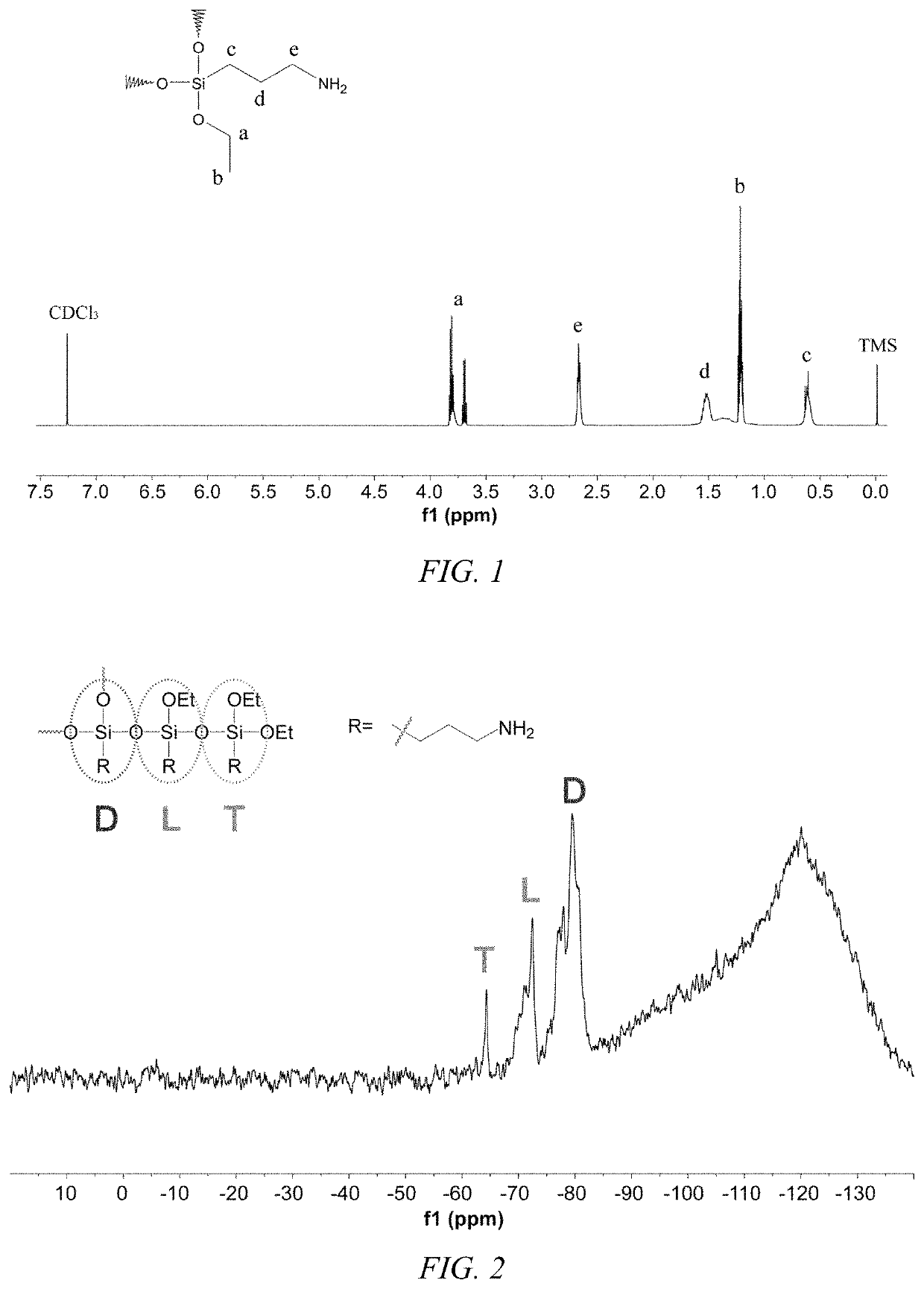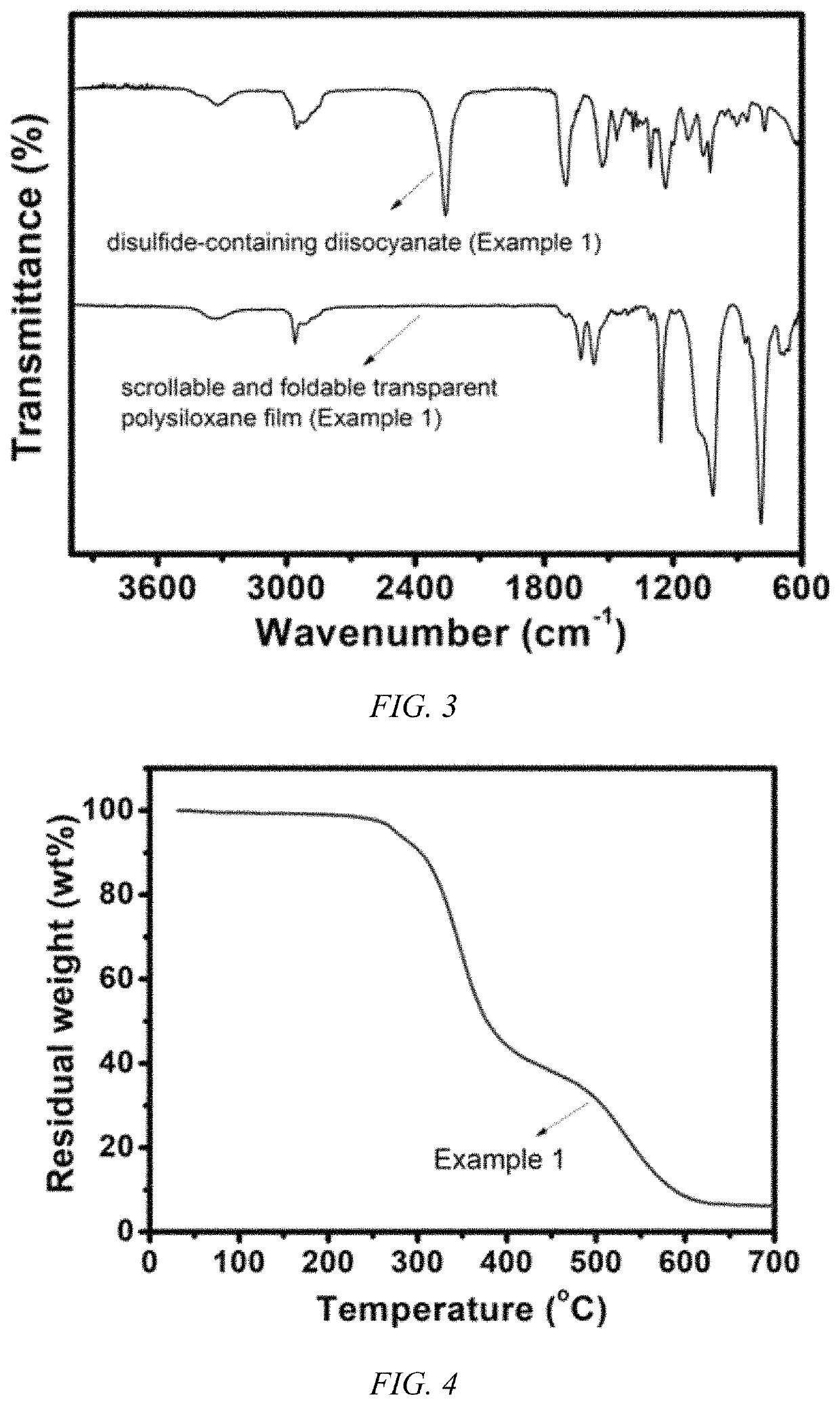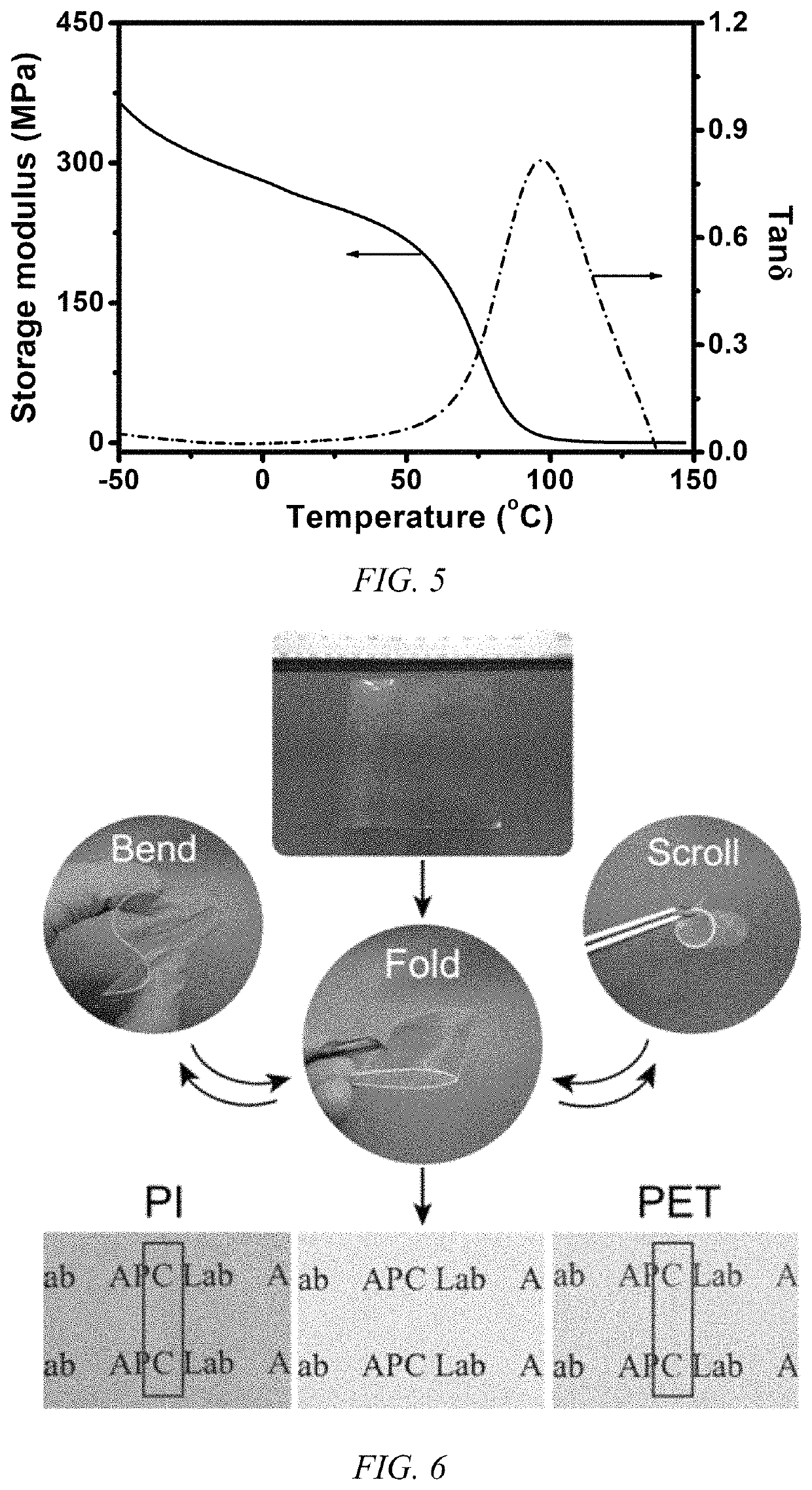Transparent rollable folded polysiloxane film and preparation and self-repairing method thereof
a transparent, foldable technology, applied in the field of polymer films, can solve the problems of shortening the life, difficult to guarantee the service life of flexible transparent electronic devices, and the self-healing ability of commercial pi or pet films for flexible electronic devices is not ideal for cracks or even fractures, so as to achieve high modulus, tensile strength, and high rigidity and strength
- Summary
- Abstract
- Description
- Claims
- Application Information
AI Technical Summary
Benefits of technology
Problems solved by technology
Method used
Image
Examples
example 1
[0049]1) Synthesis of Multi-Amino Terminated Hyperbranched Polysiloxane (HPSi)
[0050]By mass, at 20° C., 100 g γ-aminopropyltriethoxysilane (KH550), 10 g water and 100 g ethanol were mixed homogeneously; the mixture was heated to 60° C. and continued to react for 4 h; ethanol was removed under reduced pressure to get multi-amino terminated hyperbranched polysiloxane (HPSi). 1H-NMR and 29Si-NMR spectra of HPSi are shown in FIG. 1 and FIG. 2, respectively.
[0051]2) Synthesis of Disulfide-Containing Diisocyanate
[0052]By mass, at 20° C., 77 g 2-hydroxyethyl disulfide, 224 g isophorone diisocyanate and 1000 g dichloromethane were mixed homogeneously; the mixture was heated to 60° C. and continued to react for 2 h; dichloromethane was removed under reduce pressure to get disulfide-containing diisocyanate. FTIR spectrum of disulfide-containing diisocyanate is shown in FIG. 3.
[0053]3) Synthesis of Linear Chain-Extended Polydimethylsiloxane
[0054]By mass, at 20° C., 100 g α,ω-aminopropyl termin...
example 2
[0075]1) Synthesis of Multi-Amino Terminated Hyperbranched Polysiloxane (HPSi)
[0076]By mass, at 25° C., 100 g γ-aminopropyltriethoxysilane (KH550), 12.5 g water and 150 g methanol were mixed homogeneously; the mixture was heated to 70° C. and continued to react for 5 h; methanol was removed under reduced pressure to get multi-amino terminated hyperbranched polysiloxane (HPSi).
[0077]2) Synthesis of Disulfide-Containing Diisocyanate
[0078]By mass, at 20° C., 77 g 2-hydroxyethyl disulfide, 169 g hexamethylene diisocyanate and 1100 g trichloromethane were mixed homogeneously; the mixture was heated to 70° C. and continued to react for 2.5 h; trichloromethane was removed under reduce pressure to get disulfide-containing diisocyanate.
[0079]3) Synthesis of Linear Chain-Extended Polydimethylsiloxane
[0080]By mass, at 25° C., 100 g α,ω-aminopropyl terminated polydimethylsiloxane (PDMS, Mn=1000), 13.4 g hexamethylene diisocyanate and 1100 g trichloromethane were mixed homogeneously; the mixture...
example 3
[0085]1) Synthesis of Multi-Amino Terminated Hyperbranched Polysiloxane (HPSi)
[0086]By mass, at 30° C., 100 g γ-aminopropyltriethoxysilane (KH550), 15 g water and 200 g n-propanol were mixed homogeneously; the mixture was heated to 80° C. and continued to react for 6 h; n-propanol was removed under reduced pressure to get multi-amino terminated hyperbranched polysiloxane (HPSi).
[0087]2) Synthesis of Disulfide-Containing Diisocyanate
[0088]By mass, at 30° C., 77 g 2-hydroxyethyl disulfide, 264 g 4,4′-dicyclohexylmethane diisocyanate and 1200 g 1,2-dichloroethane were mixed homogeneously; the mixture was heated to 80° C. and continued to react for 3 h; 1,2-dichloroethane was removed under reduce pressure to get disulfide-containing diisocyanate.
[0089]3) Synthesis of Linear Chain-Extended Polydimethylsiloxane
[0090]By mass, at 30° C., 100 g α,ω-aminopropyl terminated polydimethylsiloxane (PDMS, Mn=1000), 20.8 g 4,4′-dicyclohexylmethane diisocyanate and 1200 g 1,2-dichloroethane were mixe...
PUM
| Property | Measurement | Unit |
|---|---|---|
| temperature | aaaaa | aaaaa |
| elongation at break | aaaaa | aaaaa |
| temperature | aaaaa | aaaaa |
Abstract
Description
Claims
Application Information
 Login to View More
Login to View More - R&D
- Intellectual Property
- Life Sciences
- Materials
- Tech Scout
- Unparalleled Data Quality
- Higher Quality Content
- 60% Fewer Hallucinations
Browse by: Latest US Patents, China's latest patents, Technical Efficacy Thesaurus, Application Domain, Technology Topic, Popular Technical Reports.
© 2025 PatSnap. All rights reserved.Legal|Privacy policy|Modern Slavery Act Transparency Statement|Sitemap|About US| Contact US: help@patsnap.com



